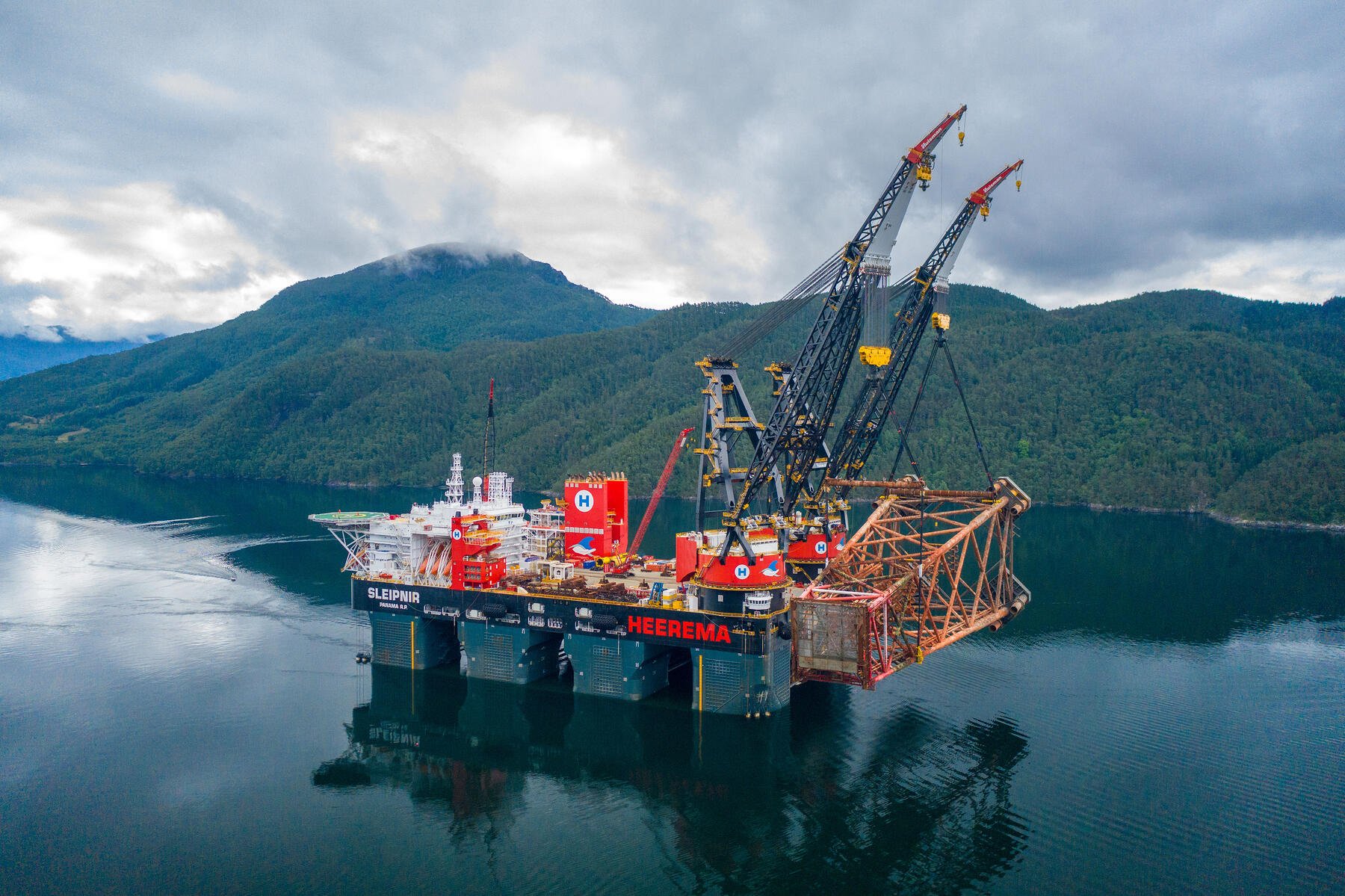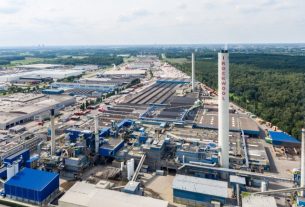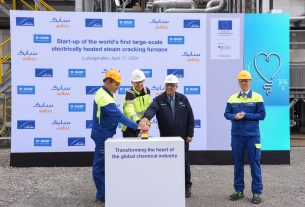The Netherlands – Sleipnir and Thialf, Heerema Marine Contractors’ largest crane vessels, have officially switched from using engines to using shore power.
The successful commissioning of the shore power project was made possible by a collaboration between Eneco, the Port of Rotterdam Authority, and Heerema, with the assistance of the Gemeente Rotterdam.
Shore power
Shore power allows vessels to turn off their engines and connect to the electrical grid for energy. The connection built by Heerema, Eneco, and the Port of Rotterdam Authority will provide Sleipnir and Thialf with sustainable energy generated by wind turbines on the nearby headland or another renewable source if necessary.
The shore power connection has a capacity of 20 MW, which is enough to power approximately 15,000 homes. When the vessels are connected to shore power, they turn off their engines, preventing virtually all emissions and particulate matter because no more marine gas oil, or LNG in Sleipnir’s case, will be used. This action directly benefits local residents by improving air quality and lowering CO2. There is also a significant reduction in noise nuisance when the engines are not running.
When Heerema’s vessels moor in Rotterdam for a standard repair and maintenance period, they save 15,000 metric tons of CO2, 20 metric tons of particulate matter, 5 metric tons of sulfur, and a significant amount of nitrogen – equivalent to the annual emissions of 5,000 diesel cars.
Rotterdam Port
Rotterdam is making the necessary transition from fossil fuels to renewable energy. With tens of thousands of ships (nearly 30,000) visiting the port of Rotterdam each year, many of which are powered by diesel engines, there is an urgent need to act to reduce these emissions. Using shore power allows vessels to turn off their diesel generators, saving up to 25,000 liters of diesel per day per ship, improving air quality, and significantly reducing noise.
By 2030, at least 90% of Rotterdam’s offshore, ferries, cruise and roll-on-roll-off ships, and container ships must use shore power. This saves approximately 200,000 tons of CO2 and 2500 tons of nitrogen emissions. This represents a significant step toward a cleaner, more future-proof port. The installation at Heerema’s mooring location in the Calandkanaal is a significant milestone supported by the municipality of Rotterdam through the Energy Transition Budget.




